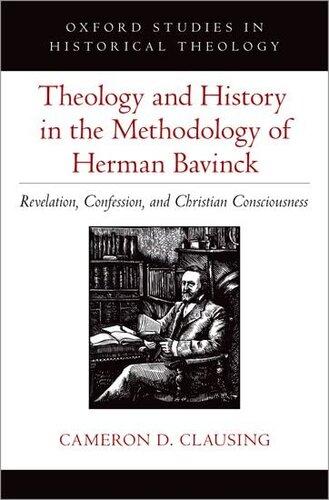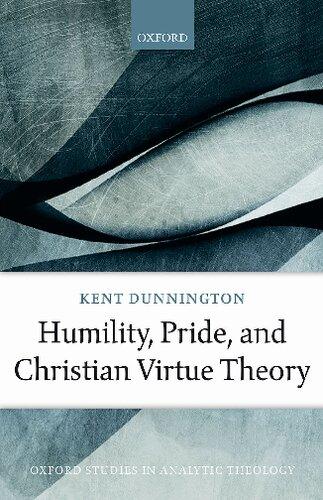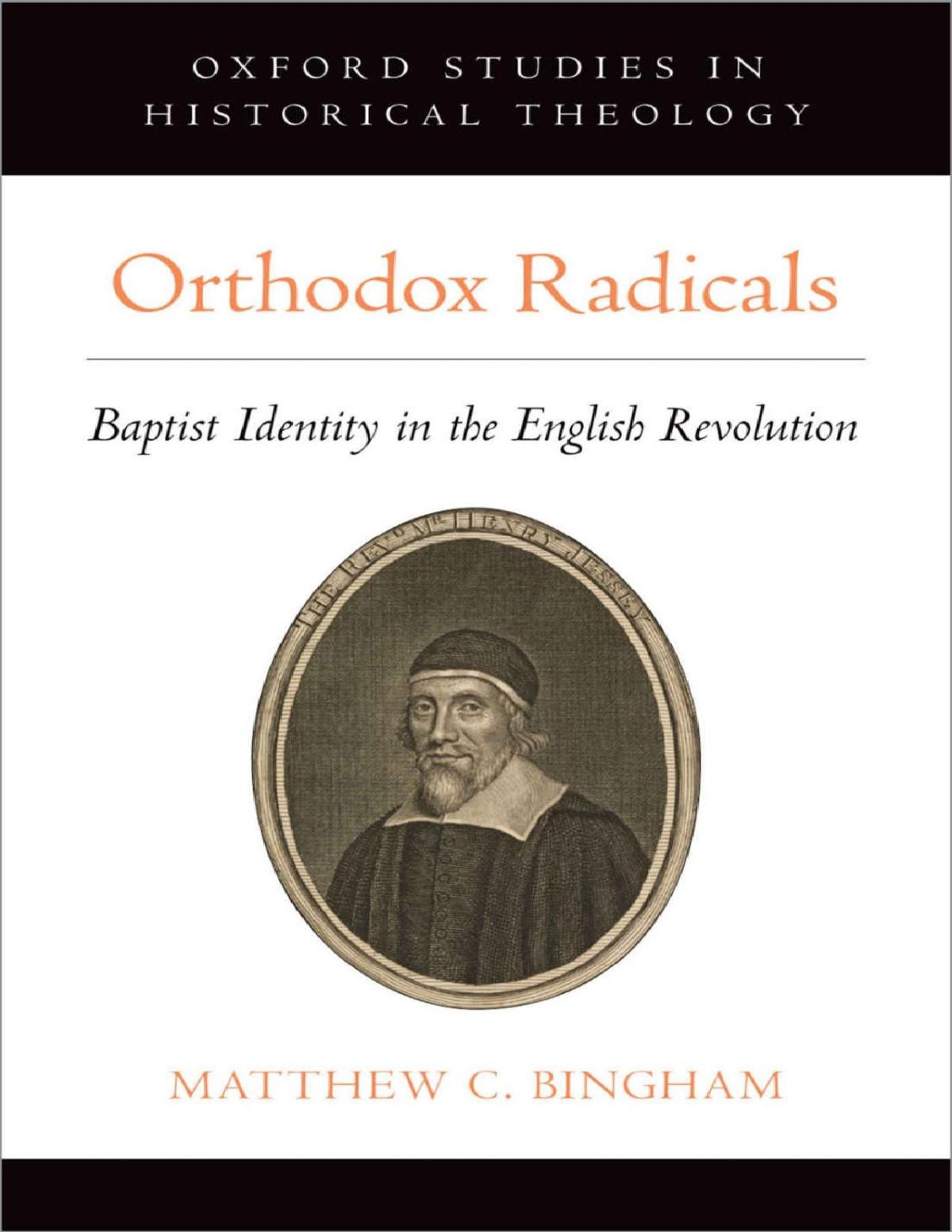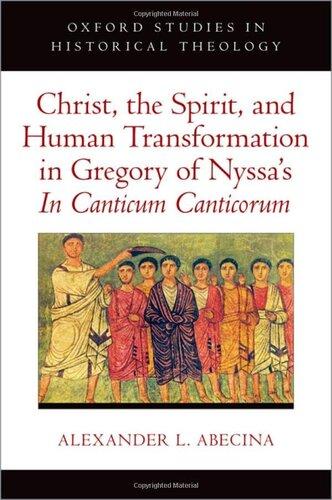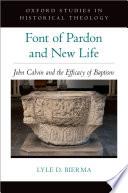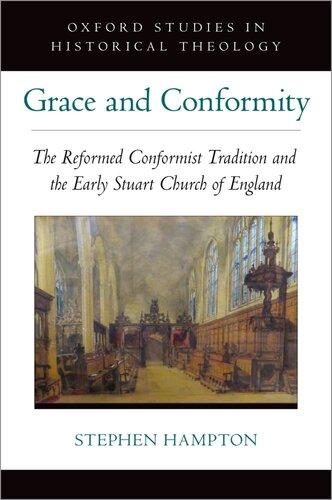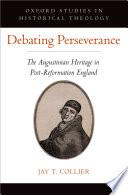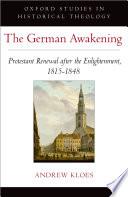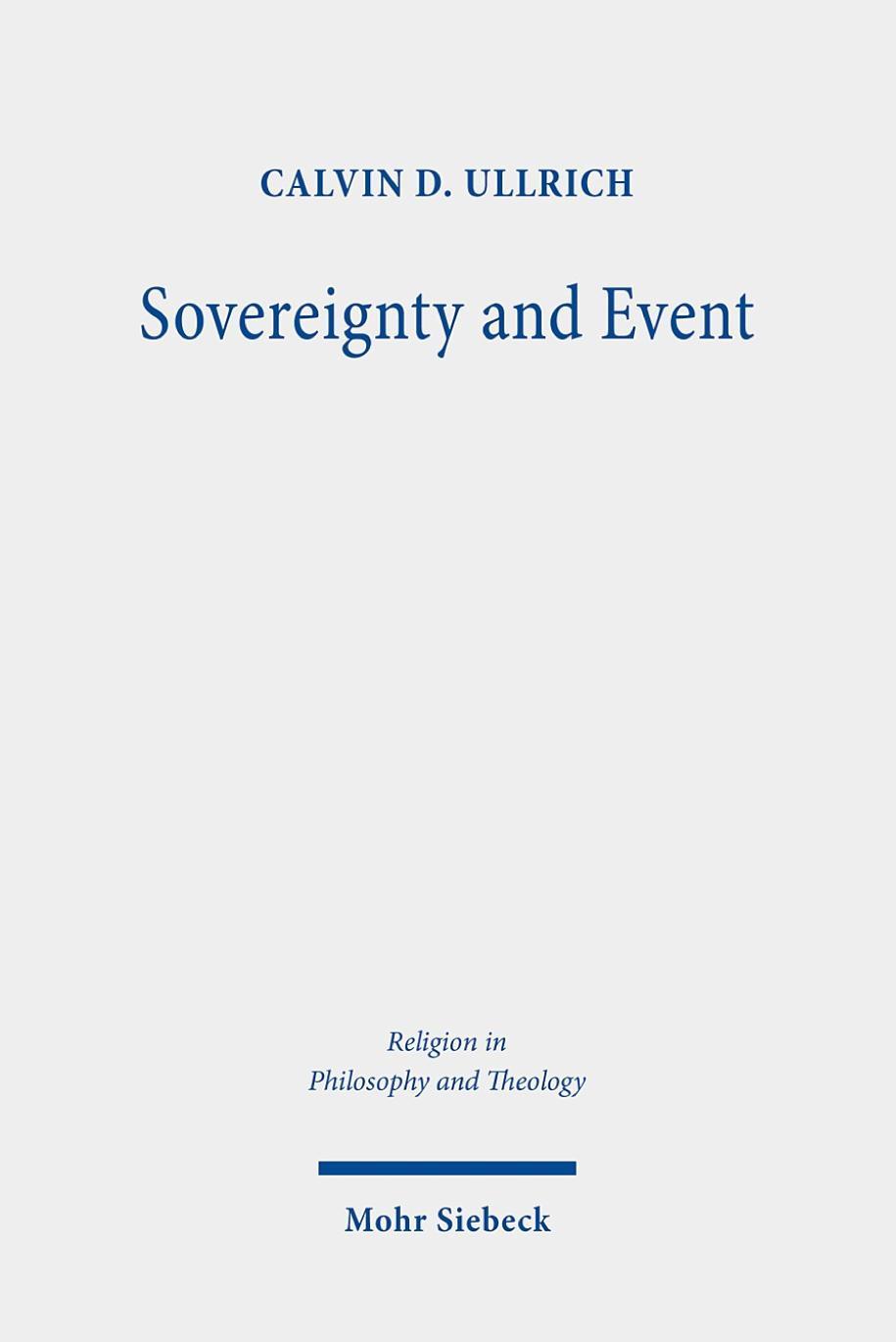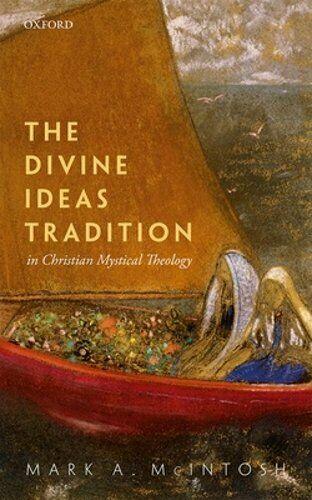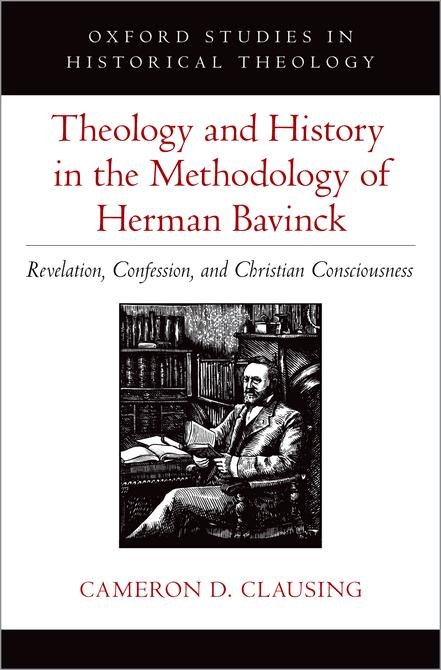Herman Bavinck
The Development of a Theologian
In 1869, when Herman Bavinck was fourteen years old his father, the Christian Reformed pastor Jan Bavinck, penned an editorial in the first edition of De Getuigenis, a monthly youth magazine, which focused on theological engagement that was faithful to orthodox Reformed theology in the late modern Dutch context.1 In this column he wrote, ‘In the present time, the intellectual climate is universal. Even our church feels the influence of the time in which she finds herself. In particular, our young people can no more withdraw from the influence of the Zeitgeist than they can protect themselves from it’.2 Dutch church culture in the nineteenth century felt the all-pervasive influence of late modern thought. Herman Bavinck would recognize this in 1911 when reflecting on the experience of puberty. Echoing his father’s insight, he acknowledged that all adolescents, regardless of time or culture, experience tensions around how to relate to everything their parents and ancestors give them, and the future they want to create for themselves. Herman thought that many modern Dutch teens experienced the struggle between faith and unbelief more intensely in the late modern context.3 Instead of fighting a battle to hermetically seal his son off from the Zeitgeist, Jan sought a better way to engage the cultural influences. Aside from editing a youth magazine, in his family life, Jan worked to make his children conscious of the Zeitgeist.
The educational path of Herman, the subject of our current study, provides a paradigmatic example of Jan’s desire to raise children who were both
1 Eglinton argues that the ‘Spring of Nations’ in 1848 functions as the marker between early modern and late modern. As to Jan Bavinck’s undertaking of the editorial duties of this magazine, Eglinton argues it was out of fatherly concern. See: James Eglinton, Bavinck: A Critical Biography (Grand Rapids: Baker Academic, 2020), xix.
2 Jan Bavinck and Helenius de Cock, ‘Inleiding’ in De Getuigenis. Maandschrift in het belang van Waarheid en Godzaligheid, Eerste Jaargang (Kampen, 1869), 3–4. ‘Ook onze kerk ondervindt den invloed van den tijd waarin zij zich bevindt. Onze jongelingen vooral zijn het, die aan den invloed van den tijdgeest zoo min onttrokken kunnen worden, als dat zij er zich van kunnen vrijwaren’.
3 Herman Bavinck, De opvoeding der rijpere jeugd (Kampen: J.H. Kok, 1916), 75–79.
Theology and History in the Methodology of Herman Bavinck. Cameron D. Clausing, Oxford University Press. © Oxford University Press 2024. DOI: 10.1093/oso/9780197665879.003.0001
orthodox and modern. Herman was given an education which both engaged in his church’s tradition (he studied in the Reformed and orthodox Theological School in Kampen) and the thoroughly modern Zeitgeist of the academy (he finished a doctorate at the University of Leiden). It was this sentiment of his father’s that Herman would develop over the years in his own work and some forty years later would himself echo, stating: ‘all trends and factions are in greater or lesser measure busy in reconstruction (Neubau), and they are exerting themselves in this work in order to reconcile ancient Christianity with modern culture’.4 The question of how one relates historic Christianity to modern culture was a pressing question for Jan Bavinck as he raised his son, Herman, and late into Herman’s career it continued to be a driving question in his own theological reflection.5 Undeniably this topic was not new to the Bavincks; it is a perennial concern for Christians. We need only look at the church father Tertullian’s famous dictum, ‘What indeed has Athens to do with Jerusalem? What concord is there between the Academy and the Church? What between heretics and Christians?’6 For Bavinck, the question that might be asked is, ‘What indeed has Berlin to do with Kampen?’, taking ‘Berlin’ as a cipher for the ‘Academy’ and ‘Kampen’ as a cipher for the ‘Church’.
This question dominated much of Herman Bavinck’s life and work. Before this project continues it would be helpful to offer a brief overview of the life and work of Herman Bavinck and demonstrate how this tension played out in some of the educational and career decisions he made.7 Bavinck was born at a moment in intellectual history when questions surrounding the relationship between the church and the academy were most pronounced. Friedrich Schleiermacher (1768–1834) had worked in the first part of that century to
4 Bruce Pass, ‘Herman Bavinck’s Modernisme en Orthodoxie: A Translation’, The Bavinck Review 7 (2016), 80; Herman Bavinck, Modernisme en Orthodoxie: rede gehouden bij de overdacht van het Rectoraat aan de Vrije Universiteit op 20 October 1911 (Kampen: J.H. Kok, 1911), 15.
5 This reading of the relationship between the Bavincks breaks with what has been the received narrative wherein Jan longed to maintain a pietistic orthodoxy in his son, sealing him off from the modern world, and Herman was accepting of modern thought. See: Valentijn Hepp, Dr Herman Bavinck (Amsterdam: Ten Have, 1921). My reading follows the one presented by Eglinton in Bavinck: A Critical Biography, 17–55.
6 Tertullian, ‘The Prescription Against Heretics’, 7 in ANF 3.246. Bavinck cites Tertullian when discussing classical education and the place of it in Christian education. See: Herman Bavinck, ‘Klassieke opleiding’ in Verzamelde opstellen op het gebied van godsdienst en wetenschap (Kampen: J.H. Kok, 1921), 222; ‘Classical Education’ in Essays on Religion, Science, and Society, ed. John Bolt, trans. Harry Boonstra and Gerrit Sheeres (Grand Rapids: Baker Academic, 2008), 211.
7 For a timeline of Bavinck’s life see the Appendix. What follows is dependent on the work of James Eglinton and his critical biography of Herman Bavinck, see: Eglinton, Bavinck: A Critical Biography My biographical account of Bavinck’s life throughout this book follows Eglinton closely.
bring the two together in Berlin. In his Brief Outline of Theology as a Field of Study, Schleiermacher put forth a proposal which called for theology to be an academic discipline with a rightful place in the academy, for it was, as Schleiermacher viewed it, a ‘positive science’.8 He also saw its role as being principally for the development of healthy piety.9 Born in 1854, Bavinck grew up in the aftermath of Schleiermacher’s grand project.
Jan Bavinck understood the context in which he was both ministering as a pastor in the Christian Reformed Church in the Netherlands and raising a family. It was a decidedly modern society; one influenced by thinkers like Kant and Lessing wherein one would not be persecuted for not adhering to the state-approved church. The Dutch Reformed Church (Nederlands Hervormde Kerk), the mainline Reformed church in the Netherlands, theologically drew upon the historic reformed creeds and confessions.10 However, during this period in Dutch church history it began to lean heavily on the theological developments coming out of Germany, most notably influenced by Schleiermacher and Hegel.11 At this point, one needs to exercise caution. Neither Jan Bavinck nor the church in which he was a minister was completely cut off from the philosophical and theological influences coming out of Germany.12 In fact, inside the Seceder movement (the group of clergy and churches which broke from the mainline Dutch Reformed Church in 1834) there could be found both a pietist streak and another which was more open to ‘modern culture’.13
For Bavinck’s education, Jan enrolled him in a pre-gymnasium, Hasselman Institute, which was run by a Seceder and supportive of his faith. Following this Herman was enrolled at the prestigious Gymnasium in Zwolle, a place that produced politicians, doctors, pastors, professors, and the only Dutch Pope (Pope Adrian IV). It was here that Herman received an education which grounded him in the classics.14 The school would set Bavinck on a trajectory that would take him anywhere he would want to go. However, upon
8 Friedrich Schleiermacher, Brief Outline of Theology as a Field of Study, 3rd ed., trans. Terrence Tice (Lousiville: Westminster John Knox, 2011), §1.
9 Ibid., §21, 55–57.
10 The historic doctrinal standards for the Dutch Reformed are known as The Three Forms of Unity. It is comprised of the Belgic Confession, the Heidelberg Catechism, and the Canons of Dort.
11 For a more comprehensive reading of the movement of German theological and philosophical thought into the Dutch context during the nineteenth century, see: George Harinck and Lodewijk Winkeler ‘The Nineteenth Century’ in Handbook of Dutch Church History, ed. Herman Selderhuis (Göttingen: Vandenhoeck & Ruprecht, 2014), 435–517.
12 Jan himself had come from Germany to the Netherlands as a minister.
13 Eglinton, Bavinck, 84.
14 Ibid., 48–50.
graduating from Zwolle Gymnasium, Herman took a different academic path from his peers, enrolling in the Theological School in Kampen in 1873. Since 1854 the Theological School had attempted to be ‘scientific’ in its approach to theology. Nevertheless, the school’s attempt was not always successful, and Herman would quickly become dissatisfied with the school staying as a fulltime student just one year.15 In 1874 he began his studies at the University of Leiden, the Netherlands’ oldest and most prodigious university. He became a student of Johannes Scholten (1811–1885), a Dutch theologian known for his intensely modernist theological project. Even though Bavinck was Scholten’s student, the Leiden Old Testament scholar Abraham Kuenen (1828–1891) proved to be more influential in Bavinck’s studies. Kuenen had taught Herman how to go about the task of historical theology. He had an irenic approach to those with whom he disagreed, and he was a theological polymath (teaching ethics, historical theology, as well as in his discipline of the Old Testament). Given these factors and the fact that Scholten’s prime was well into the past, Kuenen functioned as Bavinck’s de facto doctoral supervisor.16 By 1880, Bavinck finished his doctoral work, producing a thesis on the ethics of Ulrich Zwingli.17 That same year he passed his theological exams at Kampen.
Before the completion of his doctorate Herman was approached by Abraham Kuyper (1837–1920), a national figure in the church, politics and a person whom Bavinck admired, to come and teach at Kuyper’s newly founded Free University of Amsterdam. While tempted with this offer, Bavinck turned Kuyper down, and instead he took a call to a parish church in Franeker in 1881. This would not be the last time Kuyper approached him nor would it be the last time Bavinck turned him down.18 That same year Bavinck agreed to edit a new edition of the Synopsis purioris theologiae, an early modern Reformed document which explicates the theology affirmed at the Synod of Dort.19 This was Bavinck’s first academic project after his doctoral work. Bavinck would stay in Franeker for just over one year before he was appointed by the Christian Reformed Church as a lecturer at the Theological School in Kampen.
15 Ibid., 35–37; 60–63; George Harinck and Wim Berkelaar, Domineesfabriek: Geschiedenis van de Theologische Universiteit Kampen (Amsterdam: Prometheus, 2018).
16 Eglinton, Bavinck, 96–99.
17 Herman Bavinck, De ethiek van Ulrich Zwingli (Kampen: G.Ph. Zalsman, 1880).
18 Eglinton, Bavinck, 101–104.
19 Herman Bavinck, Synopsis purioris theologiae (Leiden: Donner, 1881).
Bavinck lectured and wrote in Kampen from 1882 to 1902. During this period, he was prolific. His work primarily focused on theological construction,20 reviews of contemporary scholarship,21 and works trying to find a path between the academy and the church.22 However, the most important project that Bavinck developed in this time was the first edition of his Reformed Dogmatics (1895–1902). This was a four-volume work of dogmatic theology that walked through many of the loci of theology starting with prolegomena and finishing with eschatology. In 1902, after three failed attempts to lure Bavinck to the Free University, Kuyper finally got him to come to Amsterdam, and Bavinck took up a post teaching theology there. He would edit his Reformed Dogmatics in the following years; culminating in a significantly revised second edition completed in 1911. His work also shifted focus to questions surrounding Christian engagement in society considering everything from Christian worldview23 to evolution24 to pedagogy.25 In 1911 Bavinck was elected to the second chamber of the Dutch parliament—a parttime political role held alongside his work at the Free University. On 29 July 1921, Bavinck died in Amsterdam.
Throughout his life, Bavinck’s educational and career choices demonstrated the constant tension he felt between the academy and the church, between orthodoxy and modernity. As has already been noted, after one year at Kampen he went to the University of Leiden. After Leiden instead of a job in academic theology, Bavinck took a pastorate to make himself available to get a job in Kampen. A year into the pastorate, he went to a job at the Theological School in Kampen, a position that was not going to give him the most stimulating engagement with ‘scientific’ theology available in the Netherlands. Yet,
20 E.g., Herman Bavinck, ‘Calvin’s Doctrine of the Lord’s Supper’, trans. Nelson Kloosterman, MidAmerica Journal of Theology 19 (2008), 127–142; ‘Calvijn’s leer over het Avondmaal’, De Vrije Kerk 13:10 (October 1887), 459–486.
21 E.g., De theologie van Prof. Dr. Daniel Chantepie de la Saussaye: bijdrage tot de kennis der ethische theologie (Leiden: Donner, 1884).
22 E.g., ‘The Catholicity of Christianity and the Church’, trans. John Bolt, Calvin Theological Journal 27 (1992), 220–251; cf. Herman Bavinck, De katholiciteit van christendom en kerk: rede gehouden bij de overdracht van het rectoraat aan de Theol. School te Kampen op 18 December 1888 (Kampen: G. Ph. Zalsman, 1888)
23 Herman Bavinck, Christian Worldview, eds. and trans. Cory C. Brock, James Eglinton, and Nathaniel Gray Sutanto (Wheaton, IL: Crossway, 2019); Christelijke wereldbeschouwing: rede bij de overdracht van het rectoraat aan de Vrije Universiteit te Amsterdam op 20 October 1904 (Kampen: J.H. Bos, 1904).
24 Herman Bavinck, ‘Evolution’ in Essays on Religion, Science, and Society, ed. John Bolt, trans. Harry Boonstra and Gerrit Sheeres (Grand Rapids: Baker Academic, 2008), 105–118; ‘Evolutie’ in Verzamelde opstellen op het gebied van godsdienst en wetenschap (Kampen: J.H. Kok, 1921), 1921.
25 Herman Bavinck, Paedagogische beginselen (Kampen: J.H. Kok, 1904).
there was, for Bavinck, a deep commitment to his church and to the academy in all of this. By the end of his life, he had spent almost two decades at the Free University of Amsterdam. In Amsterdam he was both a theologian and a politician. Even while Bavinck’s life and work brought to fruition much of what his father, Jan, had hoped for, by the end of his life Bavinck knew World War I had closed off the era of Jan Bavinck forever. A new course would need to be charted into the future.
Needless to say, Bavinck’s thought is complex. Due to this complexity and his thoroughgoing engagement with a variety of sources across the theological spectrum various readings of his work have been produced. The question persists in Bavinck scholarship: ‘What indeed has Berlin to do with Kampen?’ This relationship between modernity and orthodoxy in Bavinck’s writings is not original to this thesis. John Bolt’s examination of Bavinck’s use of the Imitaitio Christi theme is subtitled ‘Between Pietism and Modernism’.26
Jan Veenhof’s Revelatie en inspiratie, as well as Adam Eitel’s essay on Bavinck and Hegel highlight the distinctly post-Enlightenment thought present in Bavinck’s project.27 Others have seen in Bavinck’s thought a pronounced pre-modern stream with what some have called a Thomist flavour.28 These two readings have answered the question ‘What does Berlin have to do with Kampen?’ with a decidedly negative even antagonistic ‘nothing’, either seeing Bavinck as primarily interested in the project of Vermittlungstheologie (i.e., the real Bavinck lives in Berlin) or as an attempt to return to Reformed orthodoxy (i.e., the real Bavinck lives in Kampen). In both cases Bavinck is deemed to have been altogether unsuccessful in his project, in that he was neither modern nor orthodox. Ultimately this bifurcation in Bavinck’s thought has led to a divide in Bavinck scholarship that historically has been termed as the ‘two Bavincks hypothesis’,29 in which particular authors see two distinctly
26 E.g., John Bolt, A Theological Analysis of Herman Bavinck’s Two Essays on the Imitatio Christi: Between Pietism and Modernism (Lewiston: The Edwin Mellen Press, 2013).
27 Jan Veenhof, Revelatie en inspiratie. De openbarings—en schriftbeschouwing van Herman Bavinck in vergelijking met die van de ethische theologie (Amsterdam: Buijten and Schipperheijn, 1968); Adam Eitel, ‘Trinity and History: Bavinck, Hegel, and Nineteenth-Century Doctrines of God’ in Five Studies in the Thought of Herman Bavinck: A Creator of Modern Dutch Theology, ed. John Bolt (Lewiston: The Edwin Mellen, 2011), 101–128.
28 See: David Sytsma, ‘Herman Bavinck’s Thomistic Epistemology: The Argument and Sources of his Principia of Science’ in Five Studies in the Thought of Herman Bavinck: A Creator of Modern Dutch Theology, ed. John Bolt (Lewiston: The Edwin Mellen, 2011), 1–56; Arvin Vos, ‘Knowledge According to Bavinck and Aquinas’ (Part I), The Bavinck Review 6 (2015), 9–36; ‘Knowledge According to Bavinck and Aquinas’ (Part II), The Bavinck Review 7 (2016), 8–62.
29 Henk van den Belt has noted that this debate is a particularly Anglophone discussion. He has demonstrated that in the Netherlands it has always been understood that Bavinck is a man who has various tensions without necessarily being bifurcated. (Henk van den Belt, “Herman Bavinck’s Appropriation of Reformed Sources,” paper presented at Bavinck Centenary Conference,
different Bavincks; one a son of the Dutch Reformed orthodox tradition with a decidedly pietistic streak, and the other a thoroughly post-Kantian thinker. Both readings produce an inconsistent Bavinck who is never able to connect these two poles in his thinking adequately. What follows from this is a split in Bavinck scholarship which has left the field relatively fallow in the Anglophone world.
However, in recent years, Anglophone scholars have begun the work of plowing the field making it potentially more fruitful for the years to come from a reading of Bavinck that allows for a unified account of his thought. Most importantly James Eglinton has argued for a path forward that sees the use of the ‘organic’ motif in Bavinck’s project as a unifying tool in which Bavinck could hold together both unity and diversity, modernity and orthodoxy. Eglinton contends ‘that Bavinck’s theology of Creator as Trinity necessitates the conceptualization of creation as organism. Trinity ad intra leads to organism ad extra’.30 Building on and critiquing Eglinton’s work, Cory Brock, Nathaniel Sutanto, and Bruce Pass have argued for a Bavinck who, while appreciative of and utilizing late modern philosophical and theological sources and categories, still maintained a deep commitment to his orthodox Reformed heritage.31 Each of these projects sees Bavinck’s utilization of the organic motif as more or less successful in maintaining a unified, if not always satisfying, engagement with both modernity and orthodoxy. Eglinton and others have done admirable work in plowing straight lines in Brisbane, Australia, December 2021). The debate has taken place and can be seen in various forums. See: Hepp, Dr Herman Bavinck; Eugene Heideman, The Relationship of Revelation and Reason in E. Brunner and H. Bavinck (Assen: Van Gorcum, 1959); Rolf H. Bremmer, Herman Bavinck als dogmaticus (Kampen: J.H. Kok, 1961); Jan Veenhof, Revelatie en inspiratie; Henk Vroom, ‘Scripture Read and Interpreted: The Development of the Doctrine of Scripture and Hermeneutics in Gereformeerde Theology in the Netherlands’, Calvin Theological Journal 28:2 (1993); John Bolt, ‘Grand Rapids Between Kampen and Amsterdam: Herman Bavinck’s Reception and Influence in North America’, Calvin Theological Journal 38:2 (2003); Malcolm Yarnell, The Formation of Christian Doctrine (Nashville: Boosey and Hawkes, 2007); David van Drunen, ‘ “The Kingship of Christ is Twofold”: Natural Law and the Two Kingdoms in the Thought of Herman Bavinck’, Calvin Theological Journal 45:1 (2010).
30 James Eglinton, Trinity and Organism: Towards a New Reading of Herman Bavinck’s Organic Motif (London: Bloomsbury T&T Clark, 2012), 81.
31 Cory Brock and Nathaniel Gray Sutanto, ‘Herman Bavinck’s Reformed Eclecticism: On catholicity, consciousness and theological epistemology’, Scottish Jounral of Theology 70:3 (2017); Cory Brock, Orthodox yet Modern: Herman Bavinck’s Use of Schleiermacher (Bellingham: Lexham Academic, 2020); Nathaniel Gray Sutanto, God and Knowledge: Herman Bavinck’s Theological Epistemology (London: T&T Clark, 2020); Bruce Pass, The Heart of Dogmatics: Christology and Christocentrism in Herman Bavinck (Göttingen: Vandenhoeck & Ruprecht, 2020).
the field of Bavinck studies.32 Nevertheless, there is more that can be done to explore some of the tensions that endure in Bavinck’s project, granting that any simple solution is far from ideal or even possible. As the current study will show, Bavinck was a multifaceted thinker with many nuanced views. To claim a solution that resolves every tension in his thought would most likely produce an artificial reading of Bavinck. Therefore, I will show in this book that contemporary Anglophone scholarship which assumes a reading of Bavinck that both acknowledges the tension in his thought but denies a reading that produces large portions of Bavinck’s corpus which are incompatible with each other is the most accurate reading.
This study aims to contribute to this movement in Bavinck scholarship by examining his theological method in the light of the nineteenth-century ‘historical turn’. The ‘historical turn’ (or ‘historicism’) was a movement in which history became a science in its own right. I will argue throughout this project that while not embracing all of the relativizing implications of that movement, the role of history as a force which both shapes the present and allows for development into the future has a demonstrable influence on the theological methodology of Herman Bavinck. While it would be an overstatement to say that the rise of history as a science was determinative for all theological thinking in the nineteenth century, it is not too much to say that it was one of the most important movements in both theological and philosophical thought in the nineteenth century.33 No study has yet taken up the influence of historicism on Bavinck and Bavinck’s theological project. Thus, a careful examination of Bavinck’s theological method in light of the nineteenthcentury turn to history might provide a few seeds which when planted in the freshly tilled field of Bavinck studies could produce fruit, which in turn could nourish reflection on the topic of Bavinck as a constructive dogmatician and the relationship his late modern sources have to his pre-modern and confessional sources and Scripture.
The current project intends to fill this gap. Through a careful study of Bavinck’s theological methodology, as applied to his Trinitarian theology,
32 Along a similar line of thought, but not looking to the organic motif, various other authors have offered a unified reading of Bavinck. See: George Harinck, ‘ “Something that must remain, if the truth is to be sweet and precious to us”: The Reformed Spirituality of Herman Bavinck’, Calvin Theological Journal 38 (2003); Henk van den Belt, The Authority of Scripture in Reformed Theology: Truth and Trust (Leiden: Brill, 2008), 229–300; Brian Mattson, Restored to Our Destiny: Eschatology and the Image of God in Herman Bavinck’s Reformed Dogmatics (Leiden: Brill, 2012).
33 Elizabeth A. Clark, History, Theory, Text: Historians and the Linguistic Turn (Cambridge: Harvard University Press, 2004), 9–28.
I will show the way in which Bavinck attempted to walk the line between modernity and orthodoxy specifically with respect to the historical turn. Of particular importance for the current study will be the role of historical creeds and confessions. Creeds and confessions are especially interesting as they bring the nineteenth-century historicist project into the purview of this project. For Protestants, and particularly Reformed theology, the place of church tradition, creeds, and confessions, requires extended reflection. The reason for this is that the so-called formal principle of the Reformation, sola Scriptura, not only produces church reform, but it also lends itself to the possibility of dissolving the catholicity of the church, in that sola Scriptura can easily devolve into solo Scriptura, and the interpretative equivalent to the book of Judges ensues: ‘everyone doing what seems right in their own eyes’. Thus, we are left not with one universal catholic church but many small churches.34 Bavinck was aware of this possibility throughout his life and the nineteenth-century turn to history only highlighted this difficulty for him. This study will show that Bavinck’s work is a constructive attempt to grapple both with the history of the church while seeing the theological development which flows out of sola Scriptura as a necessary part of being ecclesia reformata semper reformanda. 35 Applying these thoughts to his Trinitarian theology in particular, in what could be understood to be an attempt to ‘reverse engineer’ his thought in this area, will provide a helpful litmus test for his theological methodology and the influence of historicism.
In historical context Trinitarian theology in the nineteenth century provides a useful map on which to plot Bavinck’s constructive project. While in the early nineteenth century G.W.F. Hegel (1770–1831) had incited something of a revival in speculative Trinitarian thought, the late nineteenth century–with thinkers such as Albrecht Ritschl (1822–1889), Wilhelm Herrmann (1846–1922), Adolf von Harnack (1851–1930), and Ernst Troeltsch (1865–1923)—saw the evaporation of interest in Protestant Trinitarian reflection. That being said, as Samuel Powell has noted, ‘conservative Protestants remained steadfastly loyal’ to Trinitarian theology.36 This stood in contrast to liberal theology where ‘the doctrine was not so much expressly denied as displaced from a position of importance’.37 Given what
34 This charge is leveled against the Reformation and it will be explored in Chapter 4.
35 Bavinck, ‘Modernisme en Orthodoxie’, 36; Pass, ‘Herman Bavinck’s Modernisme en Orthodoxie: A Translation’, 82.
36 Samuel Powell, The Trinity in German Thought (Cambridge: Cambridge University Press, 2001), 142.
37 Ibid., 171.
Powell has observed as a rather significant divergence regarding the place of Trinitarian theology in the theological projects in the nineteenth century, examining how Bavinck envisioned the Trinity in his context will shed more light on the interplay between late modern theology and Reformed orthodoxy in Bavinck’s project. The pressing question will be the extent to which the nineteenth-century turn to history in philosophical and theological reflection affected Bavinck’s theological method.
Bavinck understood that attempting to ‘repristinate’ one’s theological tradition from an older supposedly pure form was a fool’s errand. Speaking of the task of a Reformed theologian, Bavinck said:
They do not wish to repristinate, and have no desire for the old conditions to return. . . . As children of their time they do not scorn the good things which God in this age also has given them; forgetting the things that are behind, they stretch forward to the things that are before. They strive to make progress to escape from the deadly embrace of dead conservatism.38
Bavinck believed that theological development was a vital part of a constructive project, going so far as to declare in 1881, ‘a Christian Dogmatic does not yet exist’.39 The reason for this being that, for Bavinck, dogma is not the source of a single theologian or church but the confession of the ‘Christian Church as a whole’.40 There is no ideal theology on earth, all theological reflection is mixed with both pure and impure elements. Therefore, theological development is necessary.41
Yet, as has been shown above there are some who would maintain that Bavinck’s theology is a mere recapitulation of Reformed orthodox theology. Thus, the question remains to what extent Bavinck is faithful to his
38 Herman Bavinck, ‘The Future of Calvinism’, trans. Geerhardus Vos, The Presbyterian and Reformed Review 5 (1894), 13; ‘Het calvinisme in Nederland en zijne toekomst’, Tijdschrift voor Gereformeerde Theologie 3 (1896), 146.
39 Herman Bavinck, ‘The Pros and Cons of a Dogmatic System’, trans. Nelson Kloosterman, The Bavinck Review 5 (2014), 94; ‘Het voor en tegen van een dogmatisch systeem’ in Kennis en leven: opstellen en artikelen uit vroegere jaren, verzalmeld door Ds C.B. Bavinck (Kampen: J.H. Kok, 1922), 60. In this way Bavinck’s thought is similar to that of John Webster who argued that his goal in retrieval is not a return to an apparently pristine version of theological reasoning, believing that this will provide a purer form of doctrine. Theological retrieval has an eye toward theological development. See: John Webster, ‘Theologies of Retrieval’ in The Oxford Handbook of Systematic Theology, eds. Kathryn Tanner, John Webster, and Iain Torrance (Oxford: Oxford University Press, 2007).
40 Bavinck, ‘Pros and Cons’, 94; ‘Het voor en tegen’, 60.
41 Herman Bavinck, Godsdienst en godgeleerdheid: Rede gehouden bij de aanvaarding van het Hoogleeraarsambt in de Theologie aan de Vrije Universiteit te Amsterdam op Woensdag 17 December 1902 (Wageningen: Vada, 1902), 59.
expressed desire to move theological reflection forward. Did Bavinck maintain a distance from modern Protestantism’s revisionist program in the area of Trinitarian theology? Or did Bavinck do something, even in the area of Trinitarian theology, that betrays a context in which the turn to history is a major factor?
To answer the questions posed, this thesis will consider Bavinck’s theological methodology in its historical context. The opening chapter will look carefully at the nineteenth-century turn to history. That chapter will situate the historical turn in the broader discussion of the rise of history as an independent science in its own right. This will necessarily lead to some reflection on the mid-eighteenth century when history began to become a discipline in the German academy and was working to find its place. Bergjan has noted that up until this point the theological faculties in the university understood history to be little more than a rhetorical tool for illustrating the truth of a dogmatic assertion.42 This can be observed in the theological encyclopaedia of Gottlieb Jakob Planck, whose attitude functions as paradigmatic for the German academy at that time.
If that time is over among us, if a freer spirit now leads our doctrinal investigations, if, among us it is possible now to say loudly that no dogmatic idea is true merely because old Athanasius or the Council of Nicaea declared it to be true, let alone false merely because St Augustine and few African councils view it as heretical—then whom have we to thank for this but church history, which alone revealed, and could reveal, the concerns that all too often motivated the good Church Fathers in their statements, and the Councils in their decisions.43
The theologian no longer accepted a doctrinal position solely because a particular figure in history asserted that it was the truth. Church fathers ceased
42 Silke-Petra Bergjan, ‘Die Beschäftigung mit der Alten Kirche an deutschen Universitäten in den Umbrüchen der Auklärung’ in Zwischen Altertumswissenschaft und Theologie. Zur Relevanz der Patristik in Geschichte und Gegenwart, eds. Christoph Marschies and Johannes van Oort (Leuven: Peeters, 2002), 31–32.
43 G.J. Planck, Einleitung in die theologische Wissenschaften, vol. 1 of 2 (Leipzig: 1974), 109. German: Wenn jetzt diese Zeit bey uns vorüber ist, wenn uns jetz ein frenere Geist bey unseren dogmatischen Untersuchungen leitet, wenn man es jetzt laut unter uns sagen darf, dass keine dogmatische Idee schon deswegen wahr ist, weil sie der alte Athanas‘ und die Nicaische Synode für wahr erklärte, und noch weniger schon deswegen falsch ist, weil der heilige Augustin und einge Afrikanische Concilien ein ketzeren darinn sahen—wem haben wir es zu danken, als der kirschengeschichte, die uns allein aufdeckte, und allein audeckten konnte, was den guten kirchenvätern nur alzuoft ihre Aussprüche, und den Concilien ihre Entscheidungen eingab.
being used as proof texts but as, Johannes Zachhuber has noted, a ‘systematic coherence’ was necessary so as to present the material ‘in such a way that the relationship between individual event becomes plausible to the reader and its reconstruction accountable to the community of historians’.44 The implications of this are that an intimate relationship developed between the disciplines of history, philosophy, and theology. Locating Bavinck in the midst of this turn to history which flourished in the nineteenth century allows us to evaluate the extent to which the historical turn influenced his theological methodology.
After having laid out the historical and philosophical context with regard to the rise of historicism in the nineteenth century, Chapter 2 will consider Bavinck’s theological method in light of this historical turn. This chapter begins to answer the question of the extent to which the historical turn influenced Bavinck’s theological methodology. Before breaking the method down into its various parts, this chapter will allow us to see the method in its entirety. Bavinck argues that revelation, confession, and Christian consciousness are all principia in his theological methodology. Prior to examining each of these on their own terms, we need to understand how Bavinck saw them fitting together as a whole. In a sense, this instinct flows out of Bavinck’s own theological proclivity in understanding theological method as an organism, for ‘just as in every organism the whole precedes the parts’.45 This chapter links the exploration of historicism to the final three chapters and functions to set up the rest of the thesis in which each of the three distinct prongs of Bavinck’s theological methodology is looked at individually and applied to his Trinitarian theology. This is done to break down Bavinck’s theological methodology as applied to his Trinitarian theology in order to help us better determine the influence of historicism on his theological methodology.
The third chapter acts as a turning point for the entire thesis. There, I begin the test case of Bavinck’s Trinitarian theology. In this chapter, I will move from the general to the specific. To what extent can one see the influence of the historical turn on Bavinck’s theological method when one looks at the Trinity? Chapter 3 considers Bavinck’s engagement with revelation. For Bavinck, the starting place of theological reasoning is Deus dixit. God has spoken and in that he has revealed himself. This conviction functions to ground all of Bavinck’s theological project. As it relates to the Trinity, for
44 Johannes Zachhuber, Theology as Science in Nineteenth-Century Germany: From F.C. Baur to Ernst Troeltsch (Oxford: Oxford University Press, 2013), 7.
45 Bavinck, RD4, 332; GD4, 313.
Bavinck the climax of the revelation of God is seen in the incarnation of the Son and the outpouring of the Spirit.46 Because of this understanding of revelation, Bavinck sees all of revelation as bearing a Trinitarian shape. Thus, for Bavinck revelation is never less than words, but also more than words; the missions of the Son and the Spirit are the communicative actions of the Triune God that interpret all other communicative action of the Triune God. Therefore, what Chapter 3 ultimately points to is that the missions ad extra flow out of the processions ad intra. Chapter 3 thus demonstrates how Bavinck’s Trinitarian theology finds its principal grounding in Scripture, the written, objective revelation of God. The chapter will illustrate how Bavinck understood Scripture in light of the historical turn.
Chapter 4 moves from revelation to church confession. Bavinck believed it was impossible to develop a dogmatic system solely from Scripture.47 To some extent the application of this belief in Bavinck’s project betrays the influence that the turn to history had on Bavinck. For there to be a dogmatic system, development is necessary, the church’s participation in organizing the parts of Scripture and its extended reflection on the data allows for a dogmatic system to form. The chapter considers Bavinck’s own understanding of the role of creeds and confessions in his Trinitarian theology. Specifically, it looks at how Bavinck understood the authoritative role of creeds and confessions in his theological project. While never attaining confessional status in the Dutch Reformed church, Bavinck’s work on the Synopsis purioris theologiae a seventeenth-century work of four theology faculty members at the University of Leiden explicating the theology expounded in the Canons of Dort—serves as an illustrative example of Bavinck’s thoughts surrounding church historical texts. The chapter demonstrates that in many ways Bavinck’s engagement with historical sources is not wholly unique. Accordingly, the chapter engages with Bavinck’s interaction with historical texts (namely, the Synopsis) and definitions when developing his Trinitarian theology.
Chapter 5 closes out the analysis of Bavinck’s theological method in light of the historical turn, by considering his last principium, Christian consciousness. For Bavinck, Christian consciousness was an acknowledgement of the subjective nature of theological reflection. Theology is done by people who live, move, and breathe in a particular time and place with all of the cultural,
46 Bavinck, RD2, 269; GD2, 235.
47 Bavinck, ‘The Pros and Cons’, 98; ‘Het voor en tegen’, 63.
philosophical, and theological questions and concerns associated with that temporality. Theology is paradoxical. It looks to eternity while being inherently temporal. As Bavinck understood it, this was a necessary part of theological reflection. Bavinck argued that a dogmatic system is an organism.48 If a dogmatic system is organic, that system must constantly be growing and developing toward a definite teleological end.49 For there to be a ‘Christian dogmatic’ the entire church, inclusive of all ethnicity, generation, nationality, etc., must speak to it.50 Thus, this chapter shows that as Bavinck understood it, theological reasoning necessarily continues to develop and grow. Bavinck believed that arrogance was shown in maintaining that the church arrived at all truth at some point in the past.51 Thus, this chapter considers how Bavinck connected both a faithfulness to confessional and creedal standards to the concept of theological development. In applying the idea of Christian consciousness to his Trinitarian theology I will demonstrate how Bavinck borrowed from and utilized nineteenth-century concepts surrounding ‘personality’ to help develop his Trinitarian theology. What will be shown is that while Chapters 3 and 4 consider Bavinck’s retrieval of both Scripture and tradition in Trinitarian theology, Chapter 5 notes how retrieval is not repristination but that it ‘opens up new vistas for today’.52
In a sense the thrust of Bavinck’s project throughout his entire career was one of trying to mediate between the reformed and orthodox wing of his theological tradition and the Zeitgeist in which he found himself. This book is an attempt to explore the extent to which he was successful with regard to one particular area of that Zeitgeist, namely, the historical turn. Just as Bavinck was finishing his time in Kampen and moving to the Free University of Amsterdam he delivered an address in which he stated:
In that time the idea was alive in the church that we must leave the world to its own fate, and precisely because I came out of the circle which I come from, I felt compelled to seek my education at a University. For that church was in great danger of losing sight of the catholicity of the church for the
48 Bavinck, ‘The Pros and Cons’, 96; ‘Het voor en tegen’, 62.
49 Bavinck, Christian Worldview, 70–72; Christelijke Wereldbeschouwing, 65.
50 Herman Bavinck, Der wetenschap der H. Godgeleerheid: rede ter aanvaarding van het leeraarsambt aan de Theologische School te Kampen, uitgesproken den 10 Jan. 1883 (Kampen: G.Ph. Zalsman, 1883), 12.
51 Bavinck, ‘The Pros and Cons’, 99; ‘Het voor en tegen’, 65.
52 Darren Sarisky, ‘Introduction’ in Theologies of Retrieval: An Exploration and Appraisal, ed. Darren Sarisky (London: Bloomsbury T&T Clark, 2017), 2.
Herman Bavinck: The Development of a Theologian 15 stake of holiness of life. And then the thought arose in me, ‘Is it possible to reconcile both of these?’. . . My goal is to hold tightly to both, and not to let go of either.53
In what follows, I will explore how he tried to hang on tightly both to the historical turn of the nineteenth century and his church’s theological tradition with regard to his Trinitarian theology. Acknowledging what he believed to be true, namely that ‘a Christian Dogmatic does not yet exist’.
53 Eglinton, Bavinck, 216; cf. C. Veenhof, ‘Uit het leven van de Theologische Hogeschool 6’, De Reformatie 30 (1955), 124. Dutch: In der tijd leefde in die kerk de gedachte, we moeten de wereld maar overlaten aan haar eigen lot, en juist omdat ik gekomen ben uit den kring, waaruit ik gekomen ben, gevoelde ik mij genoopt om aan eene Universiteit mijne opleiding te zoeken. Want die kerk liep groot gevaar om terwille der heiligheid des levens de catholiciteit der kerk uit het oog te verliezen. En toen rees de gedachte bij mij, is het mogelijk, die beide te verzoenen?
